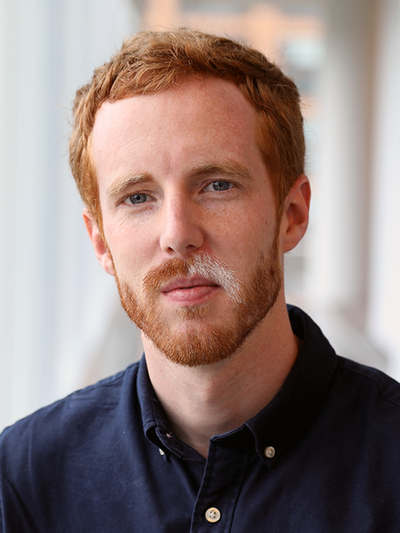Binaural audio: Q&A with Nick Michael
by Hunter Pendleton, University of Missouri student

Nick Michael is an Editor at NPR Video. This month for Innovation in Focus he shared his experience with immersive audio recording. Nick is also an alumnus of the University of Missouri’s School of Journalism.
Pendleton: Could you tell me a little about your day to day working as a video editor at NPR?
Michael: My day to day is working in a couple channels. One is project management, so making sure that all of our smaller teams are working well together and that they have the resources that they need, and that we’re delivering good journalism on time. Then there’s another part of my job, and that’s solving operational problems for the team – so tackling new systems or policies, that kind of thing. Then sometimes my job is actually shooting or editing video, and that’s always fun.
Pendleton: You wrote an article in 2017 talking about immersive audio stories – what has your experience been like working with it at NPR?
Michael: I got interested in that type of storytelling four or five years ago. It was just interesting to me to think through how you could tell a story in that medium, trying to think through what kind of new opportunities that would open up, and what kind of restrictions you’re signing up for as well. First, I did a freelance project that was all in 360, and then I applied for a small grant as a part of NPR called J360. Our application was a part of the first round of applications that they funded, so that gave us permission in a way, but also created deadlines around actually getting 360 work done, because this type of medium isn’t built into the day to day job of anyone [who works at NPR]; but there had been experimentation with this kind of spatially aware video and audio before, and so we found some enthusiastic collaborators in the audio engineers here who were interested in playing around with some spatial audio gear.
Pendleton: What kinds of projects were completed?
Michael: There were a couple of things – we did a 360 video with a partner called RYOT, and we worked together to do a 360 video at a Tiny Desk concert, the goal just being to show you what happens behind the scenes there. We learned a lot from that. There has been a smattering of others along the way, but the grand finale for lack of a better term, with the J360 grant was to capture images and sounds in the wake of Hurricane Maria in Puerto Rico. I actually ended up going twice, the first just to capture landscapes, but the second to really try and tell a story, and we had a dedicated audio engineer to capture that which was very helpful.
Pendleton: In order to capture this immersive medium, did you use a dedicated binaural microphone, or did you construct your own system for recording in 360?
Michael: Some audio we recorded with a Zoom H4N, but otherwise we used a Sennheiser Ambeo. There were a couple of different variations we used depending on a variety of factors, like how risky we thought the recording was going to be; so you’ll see, we attached a camera and microphone to this giant telephone pole that a helicopter lifted up and moved half a mile maybe, and luckily both pieces of equipment survived. But the Sennheiser was definitely the highest fidelity piece of equipment that we used.
Pendleton: You touched on it earlier, but what are some of the benefits and challenges to working in immersive audio that you’ve discovered?
Michael: I guess the largest benefit is giving the audience a small bit of agency, to give them the opportunity to explore, so if you want to give people the opportunity to really explore a landscape, I think 360 video and audio can be really powerful. What’s challenging is that you can’t direct people towards exactly what you want them to look at or hear.
Pendleton: That’s a really interesting point – you wouldn’t usually perceive the 360-degree medium as inhibiting a story, but it definitely has the potential to in certain circumstances.
Michael: Absolutely – I think the medium makes it challenging to connect with individual characters, even while it is really good at portraying places, and people’s relationships to places. Because of this, some of the most successful pieces in 360 that I’ve witnessed have had a really strong sense of place and telling a story of a character interacting with that place. Stories about a place are probably the most powerful.
Editor’s note: this interview has been edited for length and clarity
Comments